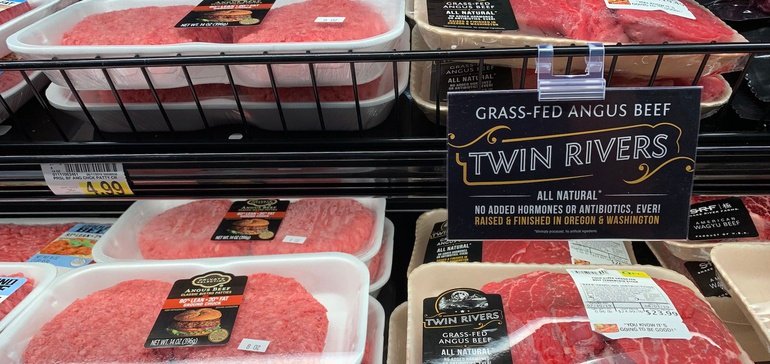Jeff Wells
Catherine Douglas Moran
Source: www.grocerydive.com, March 2021
Dive Brief:
- Meat sales surged to $82.5 billion in 2020, up 19.2% over the previous year, according to The Power of Meat 2021 report published by the Food Industry Association (FMI) and the Foundation for Meat & Poultry Research & Education. Beef accounted for the highest share of sales as it brought in $5.8 billion, the report noted.
- Many shoppers said they bought differently in 2020, including types of meat (42%), cuts (40%) and brands (45%), due to various factors including out-of-stocks, a desire to try new recipes, food fatigue and the need for better value.
- Consumers sought out value-added meat — pre-marinated, pre-cut or pre-seasoned items — in 2020 and 18% said they plan to buy more in 2021. Shoppers are also continuing to buy products that are easy to cook, fit their nutritional needs and match their values, the report noted.
Dive Insight:
The 2020 sales surge happened even as consumers were cutting back on their overall meat consumption, highlighting potential difficulties ahead for retailers. According to the Power of Meat report, the percentage of consumers who identified as “meat eaters” declined from 85% in 2019 to 71% in 2021. Flexitarianism grew from 10% of consumers saying they practiced eating this way in 2019 to 19% in 2020.
The report, which was prepared by 210 Analytics, also found that roughly 34% of shoppers are trying to cut back, but not eliminate, meat from their diets with the main concerns being the healthiness of red meat along with the presence of antibiotics and hormones.
To keep pace with evolving consumer demand, meat managers need to focus on convenience along with health needs, the report noted. The number of shoppers who say they buy value-added meat at least sometimes or frequently increased 31 percentage points between 2016 and 2021. Shoppers are also increasingly interested in fully-cooked meat and meal stations as they look for easier-to-prepare meals, and grocers and manufacturers are advised to experiment with flavors to combat food fatigue and expand kid-friendly options
“To drive trial and greater usage among low-frequency buyers, it is important that the price differential is in line with the perceived convenience benefits of value-added,” the report noted.
The frequency of value-added meat purchases tracks with increased interest in blended and plant-based alternatives. Refrigerated plant-based meat sales increased almost 84% in 2020 to $475.3 million but still remains niche at just 10% household penetration. Approximately 25% of shoppers want alternatives in the meat department, while 28% are very interested in blended products.
Driven by quality and health beliefs, interest in case-ready meat is also rising.
“Further analysis also shows convenient meal solutions are key and that food retailers have opportunities to provide more choices, along with more information and education on consumer priorities like nutrition and meal preparation — building up what we call consumers’ Meat IQ,” Rick Stein, vice president of fresh foods for FMI, said in a statement.
Responding to nutrition and health needs could help keep meat sales up, the report noted. For example, shoppers said they want more protein, fat and calorie content prominently displayed on the packaging. Claims like “Raised in the USA,” no added hormones and all-natural are also something they said they want more of, with the report noting that claims-based meat, which shoppers often see as a “better-for” option, jumped more than 18% in sales in 2020.
While providing more information on nutritional benefits is important, The Power of Meat also suggests that products promote environmental and animal welfare improvements and seize on educational opportunities.
Correction: A previous version of this story identified the Food Industry Association by its former name.
Follow Catherine Douglas Moran on Twitter

